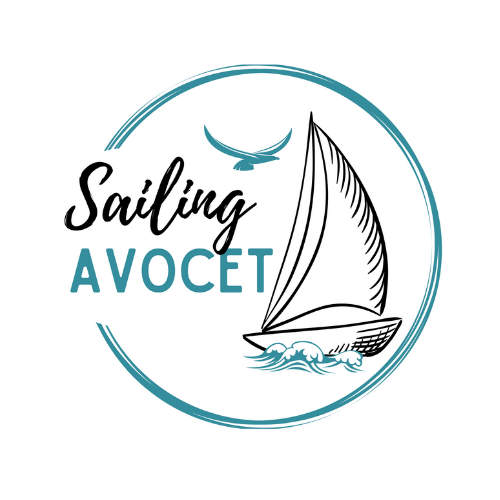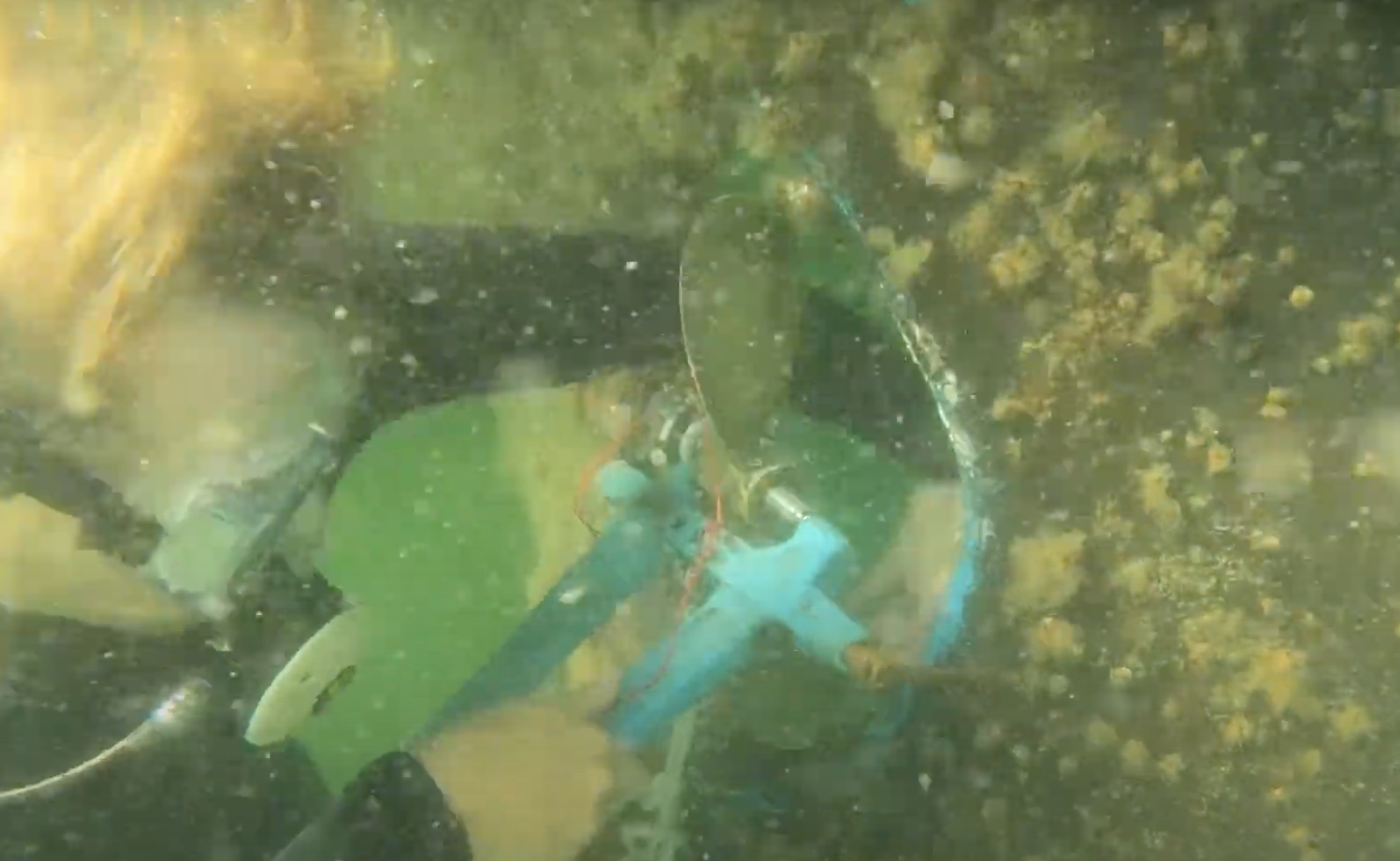Inside Chris’s Tool Bag
The Basics I Use Daily:
Small Crescent Wrench (Adjustable Wrench)
This may seem like a basic tool to mention, but it’s one I use more frequently than most others. In fact, I keep one in the cubby next to the companionway for easy access. I often find a loose fitting while sailing, and while I could pull out my open-end wrenches or sockets, the speed of using the crescent wrench is unmatched. That’s not to say this tool has no flaws—knowing its limitations and when to switch to a ‘proper wrench’ is key. But 8 times out of 10, it’s usually all I need. I specify a small crescent wrench for convenience—the easier it is to keep handy, the more likely I am to use it.
*After posting this list to Facebook, my brother was (as usual) quick to give me a hard time, enjoy the laugh!
 Drill with Good Tungsten Bits
Drill with Good Tungsten Bits
No matter what house the sorting hat dropped you into (Makita, Milwaukee, Ryobi, Dewalt…) it is important to have a drill with good tungsten bits. The cheap stuff has a good price point and may be alluring, but you will be breaking bits left and right. Tungsten Bits will last longer, and are well worth the investment because one set of quality bits will outlast cheap bits every time. The material you’ll feel the difference in cutting is stainless steel, or hardened steel of any sort. A good bit with cutting oil will cut indefinitely through very hard substrates where you’ll be glad to even get 2 holes cut with a cheaper set of bits. Its worth the money.
Open End Wrenches – Metric and SAE’
If you have any nuts or bolts on your boat you need a set of spanners, it’s the law, not a tool worth borrowing or attempt to utilize a cresent wrench for.
Hacksaw
I know, a hacksaw? Daily? Even after a five year refit we still pull the hacksaw out more often than not, and this is the one that gets it done every time. The next on my list is a grinder and you could argue these two do the same thing and the grinder can do many more. Fact is there the hacksaw makes a more controlled mess, which on a boat its nice to keep metal shavings contained, and the hacksaw delivers a cut that is extremely controlled and without super heating the material. A practical example of this is cutting and installing compression fittings with 1×19 wire. Cutting the wire with a grinder melts the end of the strands together so when you go to seperate the outer strand you physically can’t because they’ve been welded together, were as a hacksaw cuts through the same material (much slower) and doesn’t anneal the steel in the process.
Grinder
When this tool comes out Marissa knows that sh!t is about to get real. Although it isn’t necessarily used daily, it is a tool that comes out whenever real projects are happening. Fiberglass work, metal work, or woodwork I make use of this tool more frequently than you’d expect and with enough hours on the trigger I’ve gotten quite skilled in its precision uses as well. Out of tools I have the most amount of hours with, it’s the grinder and sander. Hands down.
Necessary For Cruising
Bosch Get-65
We have done a lot of sanding (well, I have done a lot of sanding… somehow Marissa get’s out of it) and I’ve used just about every sander made, Standard orbitals, DA sanders, festool’s rotex. The bosch for the money is unparalleled in its reliability, weight, and functionality. Not only does it have a very effective “orbital mode” but this sander is special because of its “turbo mode” which takes the random orbit pattern and adds the grinder-esc rotation to the pad. This sander has 1000% sped up my prep work and I have confidently sworn to never use a normal orbital again. Between my brother and I, we now own 4 of these sanders between boat life and land life.
Loos Guage
Keeping your rig properly tuned is essential for both safety and vessel efficiency. Moving from ‘feeling it out’ to knowing the exact tension in each wire provides a valuable sense of confidence. Efficiently checking each shroud, backstay, and forestay to ensure proper load has transformed how we sail, improving the responsiveness of our inputs on deck. I can now appreciate the difference in sailing with a properly tuned rig (thanks to Brian Toss’s rig tuning guidance) versus one that’s too loose or over-tightened. This tool is also incredibly valuable for helping other sailors who may not carry one themselves. I’ve tuned several rigs for others, whether after work was done or when the rig hadn’t been checked in years. Additionally, it’s allowed me to take on paid projects, like accurately tensioning bobstays, forestays, and backstays after rebuilding bowsprits for fellow cruisers—a task I wouldn’t feel comfortable tackling without a Loos gauge.
Multimeter
Got electrical? You need this. With self-contained 12V (and often 120V) systems onboard in a salt-infused environment, sooner or later you’ll need to troubleshoot something electrical. The one tool you can’t go without is a multimeter.
Calipers
Calipers are necessary on a boat for all of the precise measuring you’ll find yourself doing. Replacements for bolts, shivs, wires, shafts, anything that you need to get within a thousands of an inch, a quality caliper is a worthwhile tool to own.
Prop Puller
Some may consider this a ‘specialty tool,’ but having a prop puller aboard is essential for maintenance or repairs on your prop or shaft while cruising. I dislike being in the position of needing to borrow a tool for a project, and a prop puller is one that even some boatyards won’t lend out! It’s a tool that has come to the rescue for us and for other cruisers we travel with.
Specialty Tools:
 Sailrite LSZ Machine
Sailrite LSZ Machine
Our Sailrite has been invaluable on board Avocet—we’ve used it for everything from sail repairs to creating bug screens while at anchor. We were able to build all of our own canvas covers, dodger sides and just that alone has saved us thousands of dollars. Sewing has quickly become one of my favorite jobs aboard and is one that can generate income while cruising. Other sailors always need sail/canvas repairs and its a boat job that doesn’t require sanding or smelling toxic fumes which is a nice change of pace.
Die Grinder
Think of a die grinder as a giant Dremel, it paired with tungsten carbide bits becomes a very useful tool in shaping wood, glass, or metal, it earns its spot on board by quickly removing material. We used it combined with a vacuum to pop and remove the hundreds of blisters below Avocet’s waterline.
 Bench Grinder
Bench Grinder
I may be in the minority on this, but this is one tool I can’t justify leaving off Avocet, largely because of its wire wheel attachment. Growing up, I became accustomed to having it around, and now it’s invaluable for tackling corroded parts. It’s perfect for cleaning corrosion or gunk off bolt threads and provides a stable platform for buffing metal fittings, which makes a noticeable difference, especially on larger jobs that require hours of work.
Tungsten Carbide Triangle Scraper
This little beauty is not your average run of the mill scraper, which is why it is in this category. We love our teak aboard Avocet, and with that comes routine care, ie: lots of scraping and sanding from time to time. Chris’s brother actually turned us onto this tool after completing his refit on Prism, and since acquiring one of our own we cannot recommend it enough. Seems silly to think so highly of a scraper, but you guys… it is that good. Trust us.
Phids, Speeding stitcher, Hand Sewing Kit
Custom-making lines for your boat is an incredibly rewarding task. Not only will skills like splicing and hand sewing save you a lot of money, but they’re also practical skills that pay off quickly. Onboard Avocet, we keep things fairly traditional but enjoy using materials like Dyneema for its lightweight, cost-effective, and durable qualities. Splicing Dyneema, 3-strand nylon, or double braid allows you to update and customize your boat with lines tailored to meet specific demands.
Final Thoughts:
Don’t forget to invest in good safety gear like a full facemask, good gloves, and maybe pack a Tyvek suit or two since we had no luck finding any in Mexico! So there’s a peep inside my tool bags… speaking of, these are my favorite tool rolls.














Welcome to the blog, chief engineer! Was it the Equal Rights Act of Tools or the 4th Amendment of Terrible Current that mandated that your multimeter should be a one with clamp ammeter function, pretty useful to track draws and find weaker battery in parallel banks. IMO, the bigger the bank, the more useful. Good ones will calculate power use with VxA, and also graph current inrush on big inductive loads like now thrusters. It’s also useful for hanging the meter when you need to read it but need both hands free.